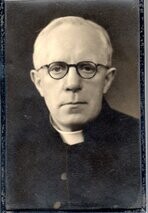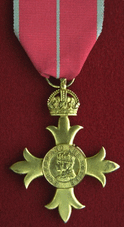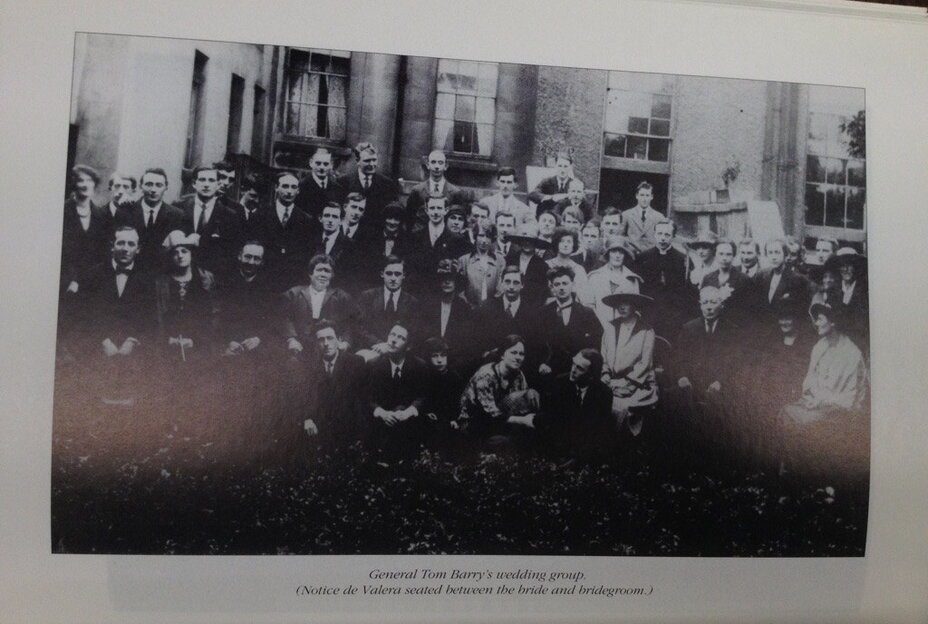Archdeacon Rev Tom Duggan, - OBE MC – set of medals:
A - The Most Excellent Order of the British Empire, 2nd type, Military Division, Officer's (O.B.E.) breast Badge, silver-gilt and a miniature OBE medal
B - Military Cross, G.V.R., reverse privately engraved in sans-serif capitals ‘Moeres Rev . T. F. Duggan 8th D.L.I. 1940’
C - 1939-1945 Star
D - Defence and War Medals, 1939 - 1945
For sale by auction. Contact us at +353 (0)21 4273327 for surther details of to leave an absentee bid

Archdeacon Rev Tom Duggan OBE MC
They are from the estate of Archdeacon Tom F Duggan who was the first chaplain to be awarded the Military Cross in the second world war, receiving the decoration for gallantry near Dunkirk.
A native of Cork, he was a teacher in St. Finbarr's College & Seminary, Cork, before joining up in September, 1939
He had been a chaplain in the Great war. (First World War)
A staunch Nationalist from the parish of Ballyheeda, Ballinhassig Co.Cork., he volunteered as a chaplain and arrived in Flanders in 1917.His postings were to the 1st Battalion Royal Dublin Fusiliers and then the Munsters and finally the Connaught Rangers. He became a POW on the 22nd of March 1918 during the German spring offensive and was interned as a prisoner in Mainz until the Armistice.
He was repatriated in November that year and was appointed secretary to Bishop Coholan and later chaplain to the Bon Secours Hospital.
He also volunteered and served during WW2 and was present at the retreat to Dunkirk and was awarded the M.C and O.B.E for outstanding bravery
On the 24/1/1977 Cork County Council and the people of Kinsale honoured Archdeacon Duggan by naming the new bridge which was erected to span the river Bandon near its estuary at Kinsale the 'Archdeacon Duggan Bridge'.
On the 2nd December 1994, Blackwater Press published 'Archdeacon Tom Duggan' (In Peace and in War) by Dr Carthach MacCarthy.
"It is no exaggeration to say that Archdeacon Tom Duggan was one of the most remarkable priests of the diocese of Cork and Ross of this century. A military chaplain with the British forces in both world wars, he was the first chaplain to be decorated with the Military Cross”
Between the two world wars he became deeply involved in the Irish struggle for independence, and in the civil war he was one of the leading peacemakers.
He taught in the diocesan seminary from 1923 to 1939. Though he always hankered for life on the foreign missions, it was not until the age of seventy-one that he achieved this with a posting to Peru.
He died in 1961 aged 71 in Peru and his funeral was attended by Cardinal Cushing of Boston, USA (the celebrant) and, among others, Bishop Cornelius Lucey of Cork & Ross.
As Archdeacon Tom Duggan was the first member of the St. James Society to died in Peru, it was decided that he should be buried at the Britannica Cemetery, Callao, Lima, Peru, which was the usual burial place for English-speaking people who died in the area. Cardinal Cushing of Boston, USA was the celebrant of the funeral mass. In the sanctuary were Archbishop Romolo Carboni, Papal Nuncio to Peru; Archbishop(later Cardinal) Landazuri-Ricketts, Archbishop of Lima and Primate of Peru; Bishop Cornelius Lucey of the dioceses of Cork and Ross and two other Peruvian bishops. The Irish colony in Lima was present in strength. Fr Michael Fitzgerald, in deference to his Cork origins and to the Archdeacon's strong links with the Columban Fathers, was given special place in the ceremonial. Fr Michael Crowley was the only Cork diocesan priest present. In July 1963 the remains of Archdeacon Duggan were exhumed and transferred to the recently established language school of the St James Society in Cieneguilla in the foothills of the Andes some 15 miles south of Lima. In February 1964 a monument over his grave was blessed. Amongst those present at the ceremony were, Professor Lucy Duggan - the Archdeacon's sister, and his good friend, An tAthair Tadhg O'Murchu, P.P., Carrig na bhFear. In the spring of 2004 the remains of Archdeacon Duggan were once again exhumed. On the 1st March, 2004 - on the occasion of the closure of the Cork Mission in Peru and Ecuador - in the presence of His Lordship, Most Rev. Miguel Cabrejos Vidarte OFM, Archbishop of Trujillo, Peru, His Lordship, Most Rev. John Buckley, Bishop of Cork & Ross and very Rev. William Costa, P.P., El Buen Pastor, El Porvenir, Trujillo, Peru, his remains were reintered in El Buen Pastor Church, El Porvenir, Trujillo, Peru - being the very first church built by the Cork Mission in Peru.
Padre Duggan 8DLI WW2 .... here’s a bit of an insight into the man .....
During the actions around Carvin-Lens a French Major was directing a platoon of 8DLI into positions near Carvin when he and the platoon saw a vehicle in no mans land , just ahead of the German positions, where the vehicle ran into a ditch . Shortly afterwards two Khaki clad figures emerged - they were Padre Duggan and his batman Pte Deveney. The French major was not impressed that the vehicle had been out in no mans land however Padre Duggan, much to the DLI`s amusement lectured the French Major in rudimentary French, and delivered in his best Irish manner regarding his duty as a British officer and the use of Army vehicles under his command ! which left the French Major storming off and muttering to himself that all English soldiers were mad! Duggan set about setting up an un-official Regimental Aid post in the main street which he manned all day with no regard for his personal safety despite accurate German shelling in the immediate area On May 31st elements of 8DLI, (DLI and some stragglers from 11DLI set up a joint regimental aid post. German shelling was heavy and accurate and casualties mounted steadily throughout the shelling Padre Duggan and Cpl H .Fletcher made repeated journeys carrying the wounded into the cellars of the nearby chateau, the Padres humour, coolness and courage did wonders for the morale of the Durhams as he carried on regardless despite the ferocity of the German bombardment.. Duggan received a MC - Cpl Fletcher a mention in dispatches. (Cited from: http://www.militarian.com/threads/father-tom-duggan-chaplain.8507/)
Links:
https://repository.library.nd.edu/view/1228/000778178.pdf
When demobilisation scheme commenced in Victoria Barracks, Belfast, yesterday, one of the first to pass through the centre was Rev. T.F. Duggan M.C., senior chaplain to the Catholic Forces in the North. Fr Duggan was the first chaplain to win the military Cross in the present war, receiving the decoration for gallantry near Dunkirk. A native of Cork, he was a teacher in St. Finbarr's College, Cork, before joining up in September, 1939. He was a chaplain in the last war.
Extract from the Cork Examiner, June 20, 1945.
Fr.Tom Duggan,a staunch Nationalist from the parish of Ballyheeda,Ballinhassig Co.Cork.He volunteered as a chaplin and arrived in Flanders in 1917.His postings were to the 1st Battalion Royal Dublin Fusiliers and then the Munsters and finally the Connaught Rangers.He became a P.O.W on the 22nd of March 1918 during the German spring offensive and was interned as a prisoner in Mainz until the Armistice.He also volunteered and served during WW2 and was present at the retreat to Dunkirk and was awarded the M.C and O.B.E for outstanding bravery
On the 24/1/1977 Cork County Council and the people of Kinsale honoured Archdeacon Duggan by naming the new bridge which was erected to span the river Bandon near its estuary at Kinsale the 'Archdeacon Duggan Bridge'.
On the 2nd December 1994, Blackwater Press published 'Archdeacon Tom Duggan' (In Peace and in War) by Dr Carthach MacCarthy.
"It is no exaggeration to say that Archdeacon Tom Duggan was one of the most remarkable priests of the diocese of Cork and Ross of this century. A military chaplain with the British forces in both world wars, he was the first chaplain to be decorated with the Military Cross.
Between the two world wars he became deeply involved in the Irish struggle for independence, and in the civil war he was one of the leading peacemakers.
He taught in the diocesan seminary from 1923 to 1939. Though he always hankered for life on the foreign missions, it was not until the age of seventy-one that he achieved this
https://repository.library.nd.edu/view/1228/000778178.pdf


